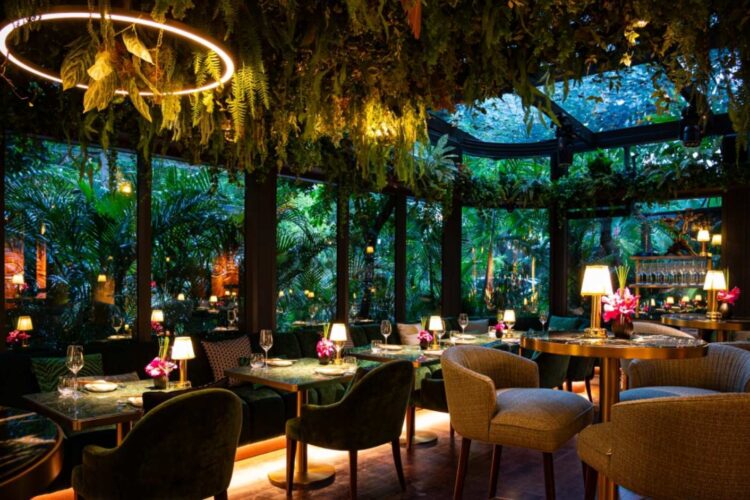In recent years, the concept of dining out has undergone a remarkable transformation. Gone are the days when restaurants and bars were seen as separate entities—one offering meals and the other drinks. The modern hospitality landscape has embraced a hybrid model that perfectly blends the two: the resto bar. These innovative establishments are revolutionizing the casual dining scene by offering the best of both worlds—delicious cuisine paired with vibrant social experiences. Among the emerging trendsetters, Riverside resto bar stands as a shining example of how these venues are reshaping what it means to dine, drink, and unwind.
What Exactly Is a Resto Bar?
A resto bar, short for “restaurant bar,” is a hybrid establishment that combines the relaxed ambiance of a restaurant with the energy of a bar. It’s designed for those who want to enjoy good food and quality drinks in a casual yet sophisticated setting.
Unlike traditional bars that primarily focus on beverages or restaurants that emphasize formal dining, resto bars strike a perfect balance. They offer diverse menus featuring both comfort food and gourmet options, alongside handcrafted cocktails, mocktails, and premium spirits—all under one roof.
The Rise of the Resto Bar Culture
The surge in resto bar popularity is tied to changing lifestyles and dining preferences. Modern diners are no longer looking just for a meal—they’re looking for an experience. Millennials and Gen Z, in particular, value ambiance, live entertainment, and interactive dining spaces.
Resto bars cater to this demand by blending dining with social engagement. Many feature open layouts, live music, and curated décor that encourage relaxation and conversation. They’ve become go-to destinations for after-work gatherings, casual dates, and weekend celebrations.
The Key Elements That Set Resto Bars Apart
- Ambience and Design – Most resto bars are thoughtfully designed to foster a warm and inviting atmosphere. Expect ambient lighting, contemporary interiors, and cozy seating arrangements that seamlessly transition from dining to lounging.
- Diverse Menu Options – They often serve global cuisines with local twists. Whether it’s artisanal pizzas, grilled meats, sushi rolls, or vegan platters, the goal is to offer something for everyone.
- Crafted Drinks – The beverage menu is a major attraction. Skilled mixologists craft signature cocktails using fresh ingredients, local herbs, and premium liquors. Non-drinkers can enjoy mocktails, cold brews, and artisanal sodas.
- Entertainment Factor – Live music, open mics, DJ nights, or themed events add an entertainment layer that elevates the overall experience.
- Social Experience – Resto bars encourage social connection. They’re designed as lively, inclusive spaces where friends and colleagues can unwind together after a long day.
How Resto Bars Are Changing Casual Dining
The casual dining industry has evolved from serving quick meals to offering immersive experiences. Resto bars have blurred the boundaries between dining, entertainment, and nightlife. Here’s how they’re redefining the scene:
- From Meals to Experiences: Instead of just eating, guests now participate in an experience that engages all senses—tasting, hearing, and seeing.
- Focus on Quality and Presentation: Attention to detail in both food plating and drink presentation adds to the visual appeal, perfect for the social media generation.
- Flexible Dining Hours: Unlike traditional restaurants, resto bars often stay open late, allowing diners to transition seamlessly from dinner to evening relaxation.
- Community Building: These spaces frequently host events like quiz nights, art showcases, or charity gatherings, making them integral parts of local culture.
Technology and Innovation in Resto Bars
The resto bar trend isn’t just about ambiance and food—it’s also about innovation. From digital menus and mobile ordering systems to ambient lighting controlled by apps, technology plays a huge role in enhancing the customer experience.
Some establishments even integrate augmented reality (AR) menus, where customers can visualize dishes before ordering. Others offer contactless payment systems and loyalty programs, making dining not only enjoyable but also efficient and secure.
Sustainability: A New Focus
As diners become more environmentally conscious, many resto bars are adopting sustainable practices. They minimize plastic use, source ingredients locally, and use eco-friendly packaging. Energy-efficient lighting, waste management systems, and locally sourced craft beverages are also becoming industry standards.
The Future of Resto Bars
Looking ahead, the resto bar trend shows no signs of slowing down. As urban populations grow and dining preferences diversify, these spaces will continue to evolve—offering unique themes, fusion cuisines, and more immersive experiences.
We’re likely to see more rooftop resto bars, waterfront venues, and even pop-up versions that combine culinary creativity with scenic environments. Venues like Riverside resto bar exemplify this future: stylish, community-driven spaces that turn a simple meal into a memorable social experience.
Final Thoughts
Resto bars have successfully bridged the gap between fine dining and nightlife. They’ve redefined casual dining by creating spaces where people can eat, drink, and connect—all in one stylish setting. With a perfect blend of culinary craftsmanship, innovative beverages, and lively ambiance, resto bars have become the heartbeat of modern social culture.

